eye movements I
1/44
There's no tags or description
Looks like no tags are added yet.
Name | Mastery | Learn | Test | Matching | Spaced |
|---|
No study sessions yet.
45 Terms
name the 5 main categories of eye movements
–Saccades (saccadic)
–Smooth pursuit
–Optokinetic
–Vestibular
–Fixational
–Vergence
optokinetic and vestibular often talked about together
what does normal control of eye movements rely on (3)
coordination of ocular muscles
various orbital ligaments
integrity of neurological control centres.
what does ocular movement occur around (2)
around the 3 principle axes (x, y and z)
which pass through the centre of rotation of the eye
explain the movement of the eyes around these 3 axis and name the different movements (3)
Rotation about horizontal or y-axis allows vertical eye movements (called elevation and depression).
Rotation about antero-posterior (sagittal) or x-axis which allows cyclorotational eye movements (called torsional either intorsion or extorsion).
Rotation about vertical or z-axis allows horizontal eye movements (called adduction and abduction).

what is the field of fixation
the amount of field that the eye can move / the extent it can move - around 40-50 degrees
~45 deg extent in 8 directions
what is the typical eye movement (in degrees) and why is it around this number
15 degrees
We rarely rotate the eyes that far (40-50) because we use head movements
what is the purpose of eye movements
•is usually to direct fixation towards an object of interest, so it is imaged onto the fovea
explain what saccades are and the purpose of them and give examples of them (3)
Saccades are rapid, jerky eye movements that occur between fixations (your eyes make when they jump from one point to another - not smoothly following something — jumping from one spot to the next)
Purpose: Bring images of interest onto the fovea
and allow us to sample visual environment (eg: reading, driving and perceiving potential threats)
how and when are saccadic eye movements evaluated in practice (5)
Saccades can be evaluated by asking a patient to look from one object to another in quick succession.
This could be in the horizontal or vertical directions.
Saccades are observed by away from and towards the midline.
Saccadic eye movements are tested when limited ocular movement is suspected.
Testing may help in the diagnosis of some neurological disorders.
explain the speed and magnitude of saccadic eye movements
•Fast, leaping movements from point to point in visual space (peak velocity ~500-700 degrees/second) - fastest eye movements period.
•Most saccadic eye movements are completed within 300msec and include a short latency between the onset of the stimulus and the eye moving.
•The magnitudes of a saccadic eye movements are related to their peak velocities. The larger the eye movement, the faster it is !!!
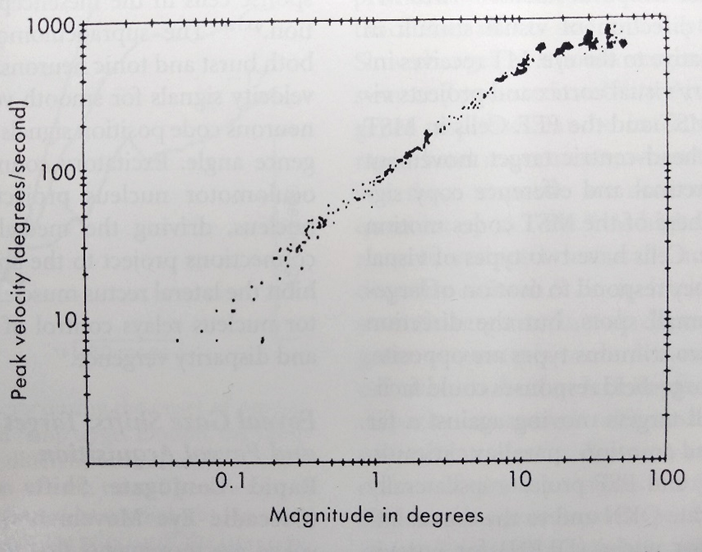
explain the accuracy of saccades (4)
ideally a single eye movement brings the target onto the fovea
if saccades are not accurate (dysmetria), corrective saccades are made
in normal vision commonly the error is an undershoot (hypometria) of about 10%
an overshoot would be abnormal
what 2 neural regions are important for making saccadic eye movements
Voluntary saccadic eye movement commands are probably mediated by parallel pathways from the frontal eye fields and the superior colliculus that converge within the brain stem.
Only ablation of both structures seriously interferes with saccadic eye movement control.
explain the ballistic nature of saccades (4)
Neural commands to make saccades are ballistic (open-loop, pre-programmed).
This means, i.e. once initiated they cannot be modified.
Visual information can be acquired during saccade and used to influence time, size and direction of subsequent saccades - can’t change that current saccade but use information to influence how the next one will be
This is specific to saccades, other eye movements can be changed as you move
explain what saccadic suppression is (1) (second point for my own understanding)
Neural process that actively inhibits visual detection during saccades and eye blinks
brain’s way of “turning down” your vision very briefly while your eyes are moving super fast (saccades) or when you blink - When your eyes move really fast (like in a saccade), the image on your retina blurs — But you don’t notice the blur - Because your brain says: don’t bother looking right now, we’re moving - So it blocks or ignores the blurry input - helps you experience a stable and clear world, even though your eyes are constantly jumping and blinking.
what things are specific to saccadic eye movements (3)
balistic nature
saccadic suppression
relationship between altitude and peak
what is the purpose of smooth pursuit movements
permit continuous foveation of objects that are moving in space
To hold image of moving object on fovea enabling continuous clear vision of moving objects.
The main stimulus is retinal movement of target across fovea - need a visual stimulus
Do not occur without relative movement between object and retina (cannot willingly make smooth eye movements without target to follow)
what is the stimulus to a smooth pursuit movement and what happens if the target moves too quickly (2)
is the movement of the image off the fovea (retinal slip) - requires a visual near-foveal moving target
If the target moves too quickly, corrective saccades may occur
describe the speed of smooth pursuit movements (2)
typically do not exceed about 40 deg/second
smooth and slow compared to saccades - not jerky or ballistic
explain how smooth pursuit movements are observed in clinic (4)
observed by asking the patient to track a moving target to the limit of gaze.
head should be kept still.
examiner should note the smoothness of the movement (that it is not jerky), the extent of movement and if gaze position is maintained.
test smooth pursuits routinely in clinic.
explain accuracy of smooth pursuit movements
Smooth pursuit can remain accurate for target velocities up to 80 deg/s
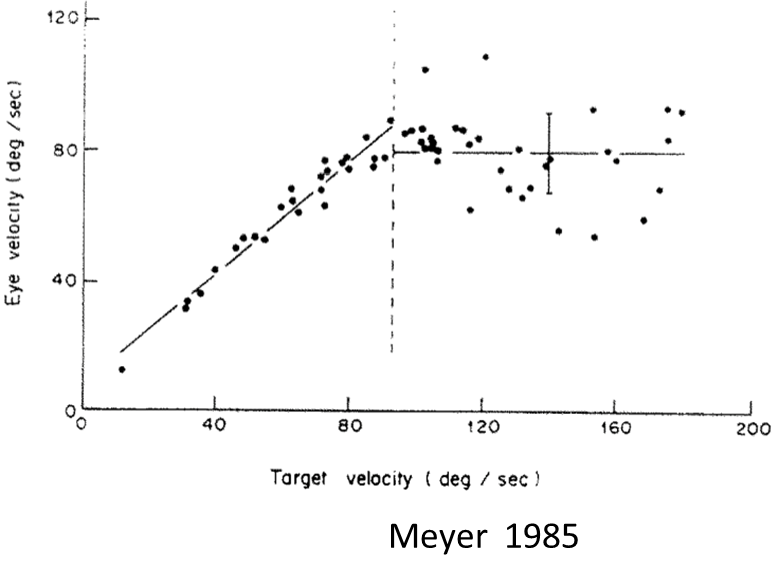
explain where the neural centers are for smooth pursuit movements (2)
Less clearly defined than for other eye movements
many involved not just one
what is the purpose of vergence (convergence and divergence) eye movements and what is the primary stimulus
to move the eyes in opposite directions to place images of a single object on both foveae, i.e., to maintain bifoveal fixation.
The primary stimulus to vergence is retinal disparity/double vision (but there are others).
explain difference between versions and vergence
versions = Conjunctive Eye Movements - one eye (ductions) - simultaneous and synchronous movements of 2 eyes in the same direction
vergence = disjunctive eye movements - simultaneous and synchronous movements of 2 eyes in opposite directions
explain the speed of vergences (3)
generally slow and smooth rather than saccadic in nature
Maximum velocity is only about 20 deg/sec.
•Symmetrical vergence in response to a disparity ‘step’ is slow, requiring up to 1 s complete (when you are looking at something far or close and it suddenly becomes far or slow the eyes are slow to respond to this)
what is the purpose of Vestibular (VOR) and Optokinetic (OKN) reflex eye movements (3)
may be considered together as their purpose is to maintain a stable retinal image during head movements
Provide stable gaze during everyday activities (like walking and running) by moving the eye in the opposite direction to on-going head motion
These are reflex while the others are voluntary eye movements primarily
explain where the number of different sensory signals that act to generate compensatory eye movements when the head moves, move from
–VOR: From the ear (semi-circular canals) and from other receptors (e.g. in the neck).
–OKN: From retinal signals
explain speed of both movements
•The eye movements observed comprise a slow following movement (smooth pursuit) and a rapid re-fixation (saccade)
how are both movements (VOR) and (OKN) elicited/caused
•The vestibular ocular reflex (VOR) can be elicited by moving the head/driven by head motion– eye movements are equal and opposite to the head movement - e.g., head turns to right, eyes move to left - one of fastest reflexes in the body
•Opto-kinetic nystagmus (OKN) is elicited by passing a repeating pattern in front of the eyes – the pattern has to cover a large area of the visual field to elicit an OKN response.
what triggers the VOR movements
Angular head rotation stimulates the semi-circular canals, which in turn triggers VOR eye movements
doesn’t have a visual stimulus - just the inner ear

in the OKN how are eye movements generated (2)
Uses visual, rather than vestibular (like the VOR), inputs to generate compensatory eye movements to stabilize gaze.
OKN eye movements are generated in response to motion of the visual world across the retina.
explain how the VOR and OKN act in sustained rotation (spinning in a chair for a longer period like 10-20 seconds) (3)
VOR holds eyes steady during first few seconds - then VOR declines (mechanical characteristics of semi-circular canals)
OKN (optokinetic nystagmus) is then stimulated to help prevent image movement
VOR and OKN work together to maintain clear vision during head movements
what is the aim of fixational eye movements
aims to maintain the retinal image of an object on the centre of the fovea - enabled a target to be imaged on the same point on the retina during eye movements.
This created a stabilised image on the retina.
in reality we cannot keep our eyes completely still
also prevents image fading
name 3 main types/components of fixational eye movements
–Tremors
–Drifts
–Microsaccades
how far do the eyes move during fixational eye movements to prevent image fading
•occur over ~1deg visual space
explain tremors - size, their role, how they result (5)
•sometimes called physiological nystagmus because of the wave like motion of the eyes.
•Tremor < 1 arcmin, high frequency (up to 90Hz) noise.
•Smallest of all eye movements with amplitudes ~size of a foveal cone.
•Their role in vision is not clear.
•Could result from some random activity in the extraocular muscles that control eye movements.5
explain drifts - size, speed, role (3)
are the small eye motions of around 2-5 min arc
occur in between microsaccades. They occur simultaneously with tremors.
may have a role in maintaining fixation when the microsaccades are poor or absent.
explain microsaccades - role, size and speed (3)
called ‘flicks’ as they are small (5-40 min arc), fast jerk-like eye movements occurring during fixation.
may have a role in correcting the displacement that occurs during drifts - drifts may move the eye away from the fovea and microsaccades bring the image back onto the fovea.
Microsaccades tend to be conjugate (i.e. same in both eyes) although there may be a role for monocular microsaccades.
explain size of microsaccades in relation to age (2)
Extent of fixational eye movements (radial distance) appear to decrease as the children become older.
Extents also larger in amblyopic eyes/lazy eye
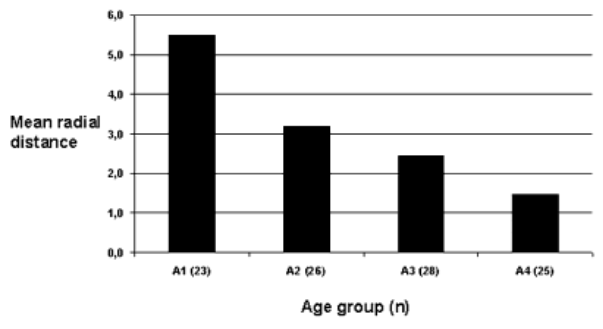
role of microsacchades in more depth
After stabilizing the retinal image, the image tends to fade.
By introducing microsaccades, the image could be restored, which led to the view that the fixational eye movements help maintain vision by countering so called retinal fatigue.
explain the Troxler effect
•This effect shows how neural adaptation can lead to a reduction in sensitivity – perceptual fading (a type of suppression)
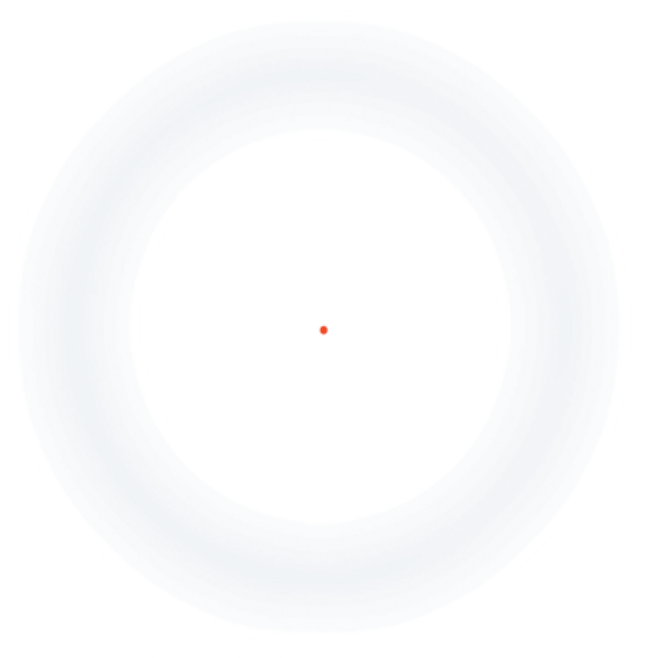
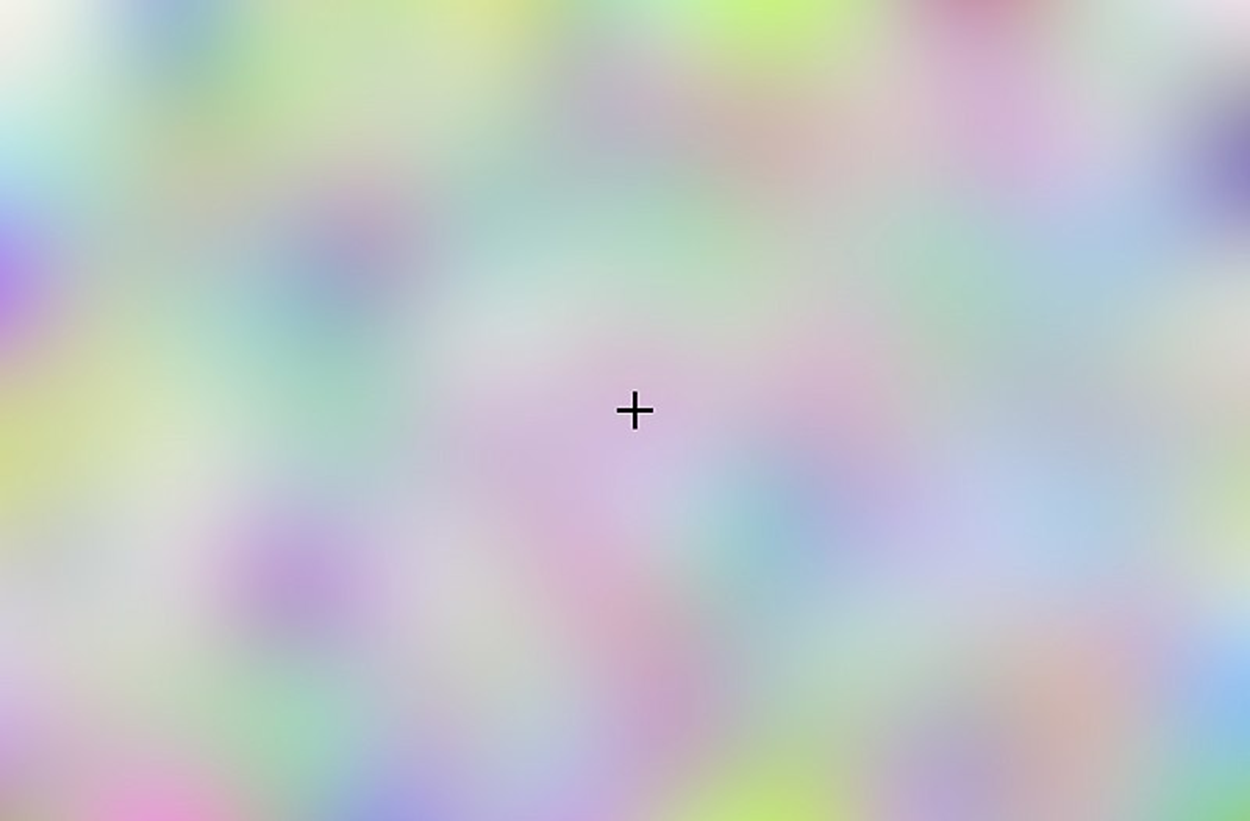
name some of the methods we can use to measure eye movements (6)
–Direct observation of the eyes.
–The EOG (electro-oculogram).
–Infra-red reflection methods.
–Video systems
–Scleral search coil (research)
–Purkinje eye tracker (research) – relies on on cues from more than 1 surface of the eye, not just cornea
explain EOG - electro-oculogram method (4)
records the eye position using electrodes attached to the face.
Inner and outer canthi to record horizontal movements.
As the eye moves towards one electrode positive corneal potential causes a rise on one electrode and a decrease in the other.
The rate of change in the measured potential is linked to the speed of eye movement.
explain the search coil method (4)
•A coil is embedded in a contact lens annulus that is placed on the eye.
•The patient is then placed in a magnetic field.
•As the eye moves, there is a current induced in the coil. The current is proportional to the eye movement.
•Using search coil methods allows the measurement of horizontal, vertical and torsional eye movements.
explain the dual purkinje eye tracker method (4)
When you shine a light in someone eyes and you get a reflex on:
P1-2 Front-back cornea; P3-4 Front-back lens
Relative positions of Purkinje images changes with eye position
Can measure very accurately – extremely precise and can measure smallest of eye movements
explain infra-red reflection methods (5)
•This method is commonly used.
•relies on the detection of reflected infra-red light from the anterior eye by sensors.
•The reflection from the cornea is tracked relative to the pupil centre.
•The sensors can be mounted onto spectacle frames which can be useful to remove the influence of head movements.
-As the eye moves from one side to the other, the amount of light detected changes and is proportional to the eye movement